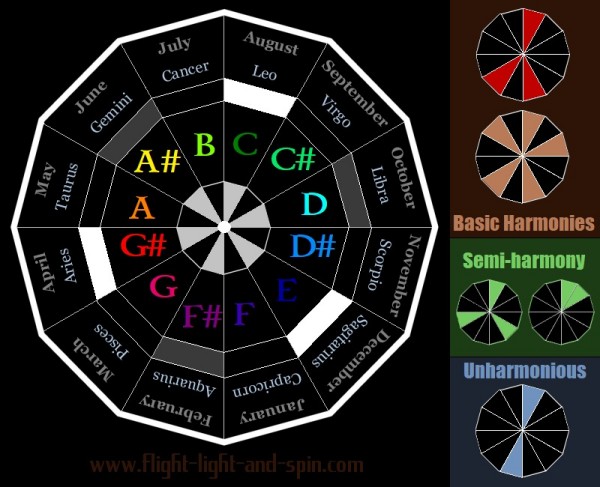So
we now know that harmonies are in jumps of 5, 7,
and 2.
But!
If a jump of 2 is good and a jump of 5
is good, then it follows that a jump of 3
is also good!
You can see this visually in the diagrams towards the end
of this page.
So
we really only have jumps of 2, 3 & 5.
This is because 7 is effectively virtually
the same relationship as 5.
Very crudely put: Prime numbers good. Non-primes bad.
And
that is all you really need to know about music theory.
When it comes to the more complex arrangements, you have to
rely on your ear, because the math just gets ridiculous in
itself, nevermind the fudge that confuses it even more!
But
if you start with basic building blocks of 2
and 5 you will have a good foundation from
which to build those more complex sounds.
You can build simple melodies very quickly, without
even needing to hear the music all that much. You can rapidly
calculate a solid foundation. Then you can spend most of your
time working on the detail of the intricate melody, using
your ear. Trial and error is vital, but is much more
effective if you have a solid foundation.
Of course, lyrics are another matter entirely; and the way
words resonate with melodies is as much mysticism as it is
psychology...


